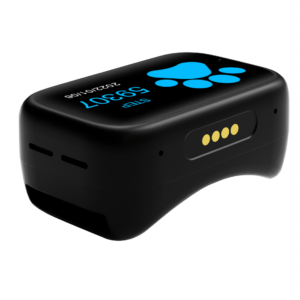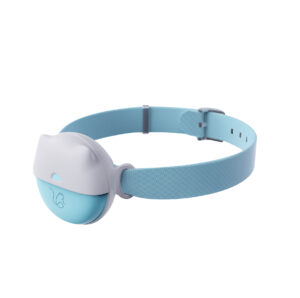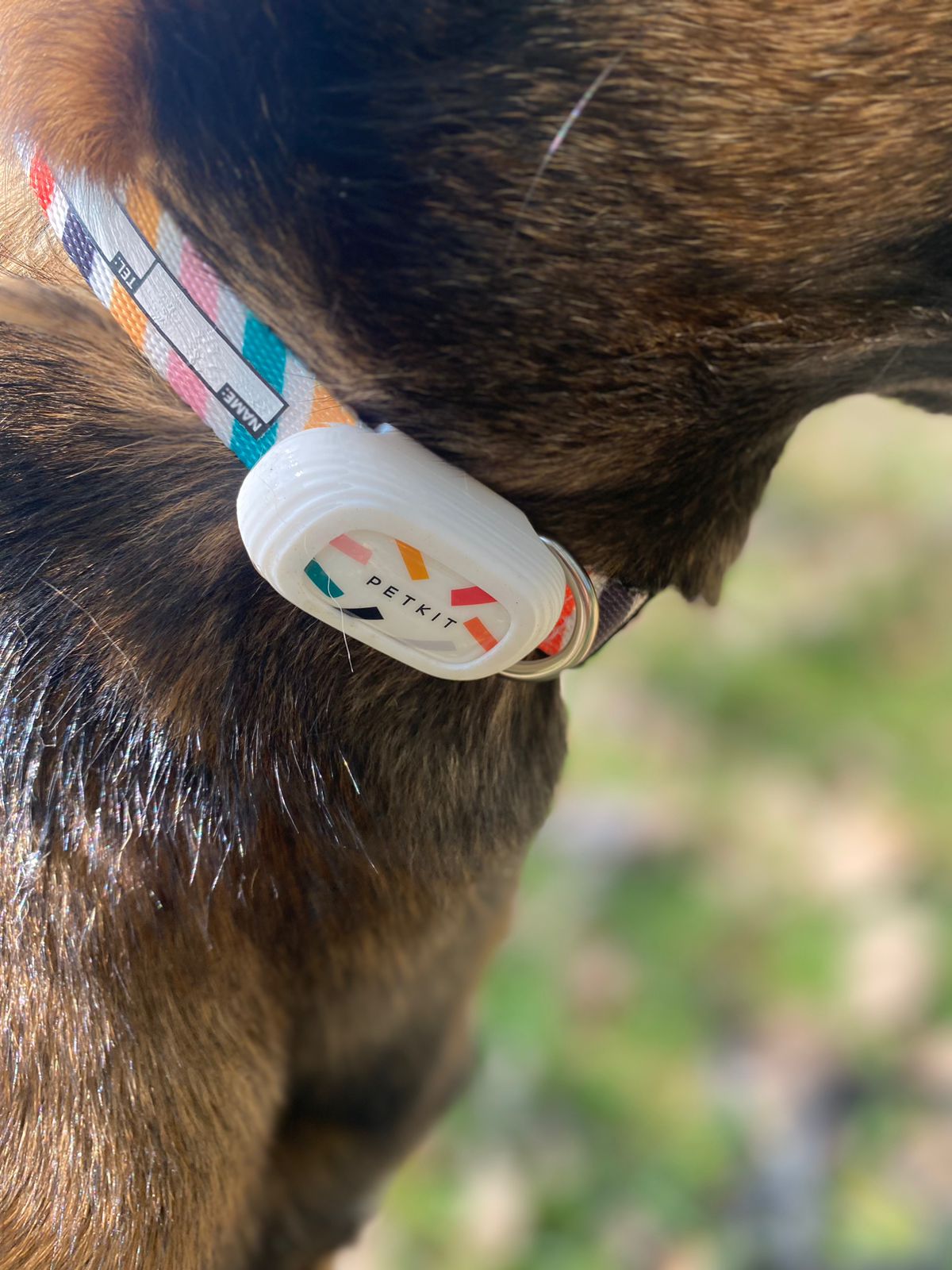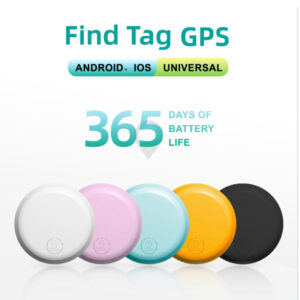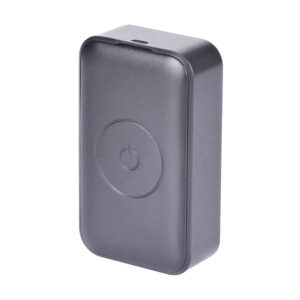GPS vs. Microchips for Pets: What’s the Real Difference?
Short answer to the biggest question: pet microchips don’t have GPS and can’t track location. A microchip is permanent ID. A GPS pet tracker shows your pet’s live location so you can find them fast. You need both for the best chance of getting a lost dog or cat home, quickly and safely.
Key takeaways
- Microchips = lifelong identification; no battery, no GPS, no live tracking.
- GPS pet trackers = real-time location, alerts, and geofences to help you actively search.
- There is no such thing as an implantable GPS microchip for dogs or cats.
- AirTag/BLE helps with proximity in busy areas or indoors, but it’s not GPS.
- Best practice: register your microchip + use a GPS tracker; add a BLE/AirTag-style tag for backup.
Do pet microchips have GPS?
No. A pet microchip is a passive ID tag under the skin. It doesn’t broadcast, it doesn’t connect to satellites or mobile networks, and it can’t show you where your pet is. If someone finds your pet and a vet or shelter scans the chip, they can call you—provided the chip is registered and your details are up to date.
If you want to see where your pet is right now, you need a GPS pet tracker attached to the collar or harness.
Microchips: permanent identification
What they are
- A tiny implant (about a grain of rice) placed under the skin between the shoulder blades.
- Stores a unique number that links to your contact details in a registry.
How they work
- Passive RFID: no battery, no GPS.
- A vet/shelter scans the chip; the scanner reads the ID.
- The ID is looked up in a registry to retrieve your contact details.
Why they’re essential
- Permanent, tamper-resistant identification that lasts your pet’s lifetime.
- Critical if collars break or tags fall off.
Limitations
- No tracking: a microchip won’t help you search in real time.
- Only works if registered and kept current.
Quick microchip checklist
- Register the chip immediately after implantation.
- Update phone, address and alternate contact whenever anything changes.
- Ask your vet which registry your chip brand uses and confirm your listing.
- Save your chip number in your phone and pet file for easy reference.
Is there a GPS microchip for dogs or cats? No—here’s why
You might see phrases like “gps tracking microchip for dogs,” “gps microchip,” or “pet gps microchip.” These don’t exist.
Three simple reasons an implantable GPS chip isn’t feasible
- Power and battery: GPS and cellular radios need power. There’s no safe, long-life battery small enough to implant under the skin.
- Antenna and signal: GPS and mobile antennas need space and clear air to talk to satellites and towers. Signal is heavily blocked inside the body.
- Size, heat, and safety: A device large enough to house radios, battery, and antenna would be bulky, generate heat, and raise safety concerns. No veterinary bodies recommend or approve such implants.
What to use instead
- GPS pet tracker on the collar or harness for real-time location.
- AirTag/BLE-style tag for proximity help in populated areas or indoors.
- Visible ID tag with your mobile number for fast, friendly reunions.
GPS pet trackers: real-time location and alerts
What they do
- Show live location on your phone so you can actively search.
- Let you set safe zones (geofences) and get instant alerts if your pet wanders.
How they work (in plain English)
- GPS: the tracker reads satellite signals to calculate location.
- Cellular/IoT: the tracker sends that location to your phone via 4G/LTE-M or similar networks.
- App: you follow your pet on a map, review routes, and set up alerts.
Typical limitations
- Battery life varies (a few days to a couple of weeks depending on settings, size, and coverage).
- Needs mobile network coverage to send you the location.
- Usually requires a small subscription for data from a cell company.
AirTag/BLE vs GPS for pets (and indoor tracking)
- AirTag/BLE beacons: Great for proximity and “pings” in busy areas or inside buildings where GPS struggles. Not true GPS, not continuous, and performance depends on nearby phones or your home beacon.
- GPS trackers: Best for live, long-distance recovery outdoors, in rural areas, or when your pet keeps moving.
Good rules of thumb
- Urban/apartment life: AirTag/BLE helps you find where in the building your pet may be; GPS gives you the bigger picture once they’re outside.
- Explorers/escape artists/farms: GPS is essential. Add BLE as a handy indoor helper.
Microchip vs GPS vs AirTag/BLE: quick comparison
Microchip (implant)
- Purpose: Permanent ID to prove ownership and enable reunions when scanned.
- Real-time location: No.
- Battery: None.
- Cost: One-time implant/registration.
- Best for: Lifelong identification and backup if collars are lost.
GPS tracker (collar/harness)
- Purpose: Live tracking, geofences, and search support.
- Real-time location: Yes.
- Battery: Rechargeable; varies by model and settings.
- Cost: Device + data plan in most cases.
- Best for: Active recovery outdoors, escape-prone pets, farms/rural.
AirTag/BLE tag (collar)
- Purpose: Proximity and crowd-sourced pings; indoor finding aid.
- Real-time location: No (intermittent pings).
- Battery: Coin cell (long life).
- Cost: One-time; no subscription.
- Best for: Urban areas and indoor assistance; not a GPS replacement.
Recommended TailMe options
- Real-time GPS: Infinity or Agile GPS Pet Tracker.
- Indoor assist: TailTags – Apple AirTag compatible; BLE Beacon for Infinity Pro & Agile Pro.
Why use both: your 3-step safety plan
1) Register your pet’s microchip
- Confirm the chip number and registry.
- Add at least two phone numbers and an email. Keep them current.
2) Choose the right GPS tracker
- Pick by pet size, environment (urban/rural), and desired battery life.
3) Add an AirTag-compatible TailTag or BLE beacon
- Helpful for indoor locating and as a low-power backup in busy areas.
Coverage, battery life and realistic expectations
Coverage basics
- Modern trackers use 4G/NB IoT where available. These are faster and more power-efficient than aging 2G networks (which are being phased out in many regions).
- Rural vs urban: Rural coverage can be patchy; GPS excels outdoors with a clear sky, while BLE/AirTag can add helpful pings in busier zones.
Battery tips
- Use balanced update rates for day-to-day; switch to live mode only when searching.
- Set smart geofences around home and routine routes.
- Keep firmware updated and fit the tracker snugly so the antenna points skyward.
- Charge on a schedule that suits your routine (e.g., overnight every few days).
Seasonal checklist: fireworks, storms, travel
Before high-stress events
- Register/confirm microchip details.
- Charge your GPS tracker to 100% and test your geofence alerts.
- Add a visible ID tag with your current mobile number.
- Secure doors, gates, harness, and leash; consider an extra tag collar.
- In-app: share tracking access with a trusted family member.
Lost pet recovery: first steps
- Open your app and switch to live tracking.
- Move, don’t wait: start toward the last known location and watch for updates.
- Ask neighbors and local security to keep an eye out; share a recent photo.
- Call nearby vets/shelters and confirm your microchip contact details.
- For more, read: “What to Do If Your Pet Goes Missing: A Step-by-Step Guide.”
Real stories from TailMe customers
- A Lucky Cat: A curious cat slipped out a window; the TailMe GPS trail showed a 1.8 km trek through gardens. Reunited in under 20 minutes after a geofence alert.
- Farm dog on the move: An adventurous sheepdog followed a herd through gullies with weak signal; buffered GPS points still mapped the route, guiding a successful pickup.
FAQs
Do pet microchips have GPS?
- No. Microchips don’t have GPS or a battery. They’re permanent ID only.
Can you GPS track a dog with a microchip?
- No. Use a GPS pet tracker for live location. Keep the microchip registered as your safety net if someone finds your pet.
Is there a GPS microchip implant for pets?
- No—there’s no safe, approved “gps tracking microchip for dogs” or cats. Use a collar-mounted GPS tracker instead.
What’s better for finding a lost pet: microchip or GPS?
- Different jobs. GPS helps you actively search in real time. Microchips help reunite you when your pet is scanned by a vet/shelter. The best protection is both.
Do I still need a microchip if I have a GPS tracker?
- Yes. Collars can come off or batteries can die. A registered microchip is your permanent backup.
Is an AirTag the same as a GPS tracker for pets?
- No. AirTag/BLE relies on nearby phones and is best for proximity pings and indoor help. GPS trackers provide live, continuous location outdoors.
Do GPS trackers need a subscription?
- No but need data that sends location to your phone. It’s what enables reliable, real-time tracking and alerts.
How do I register or update my pet’s microchip details?
- Ask your vet or chip provider which registry your chip uses, then create or update your profile with current phone numbers and address. Set a reminder to check yearly and after any move or number change.
How to find a lost dog fast with GPS?
- Charge the tracker, switch to live mode, follow the map immediately, and notify neighbors. Set a tight geofence around the last known area so you get instant exit/entry alerts as your pet moves.

